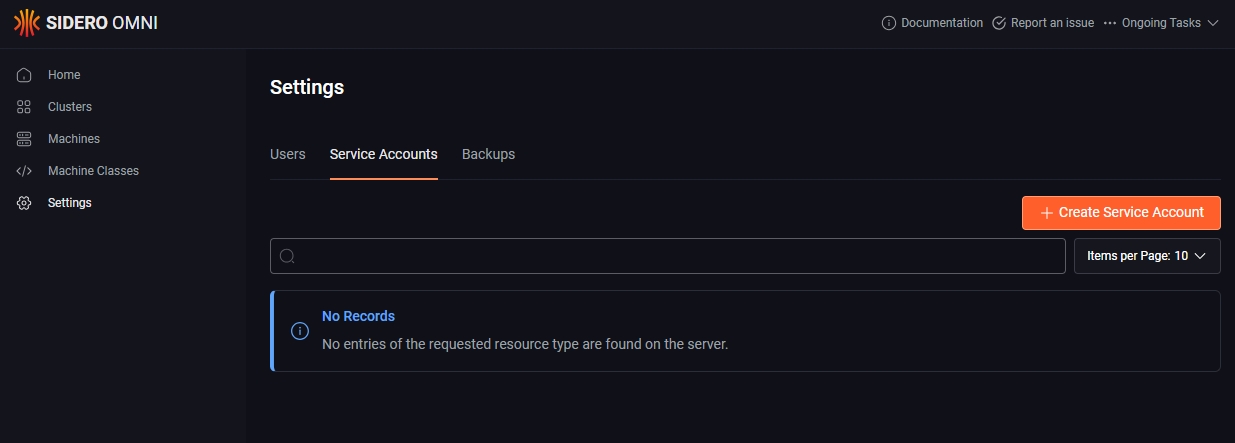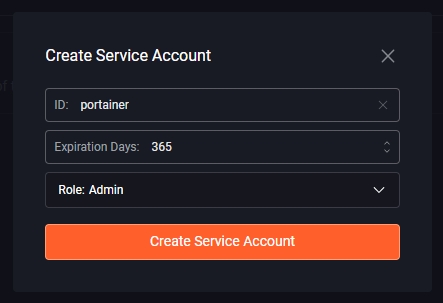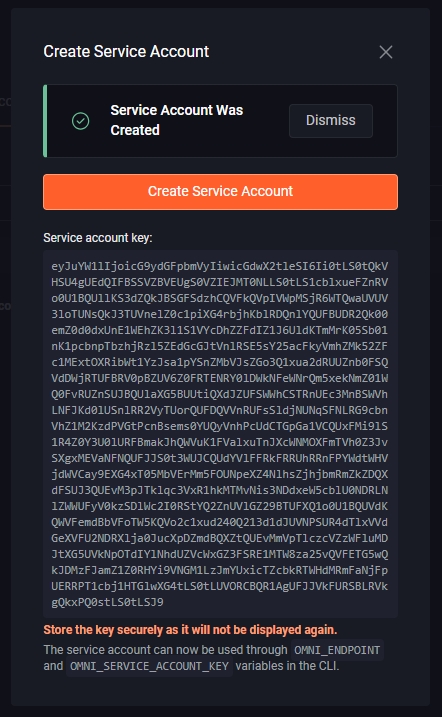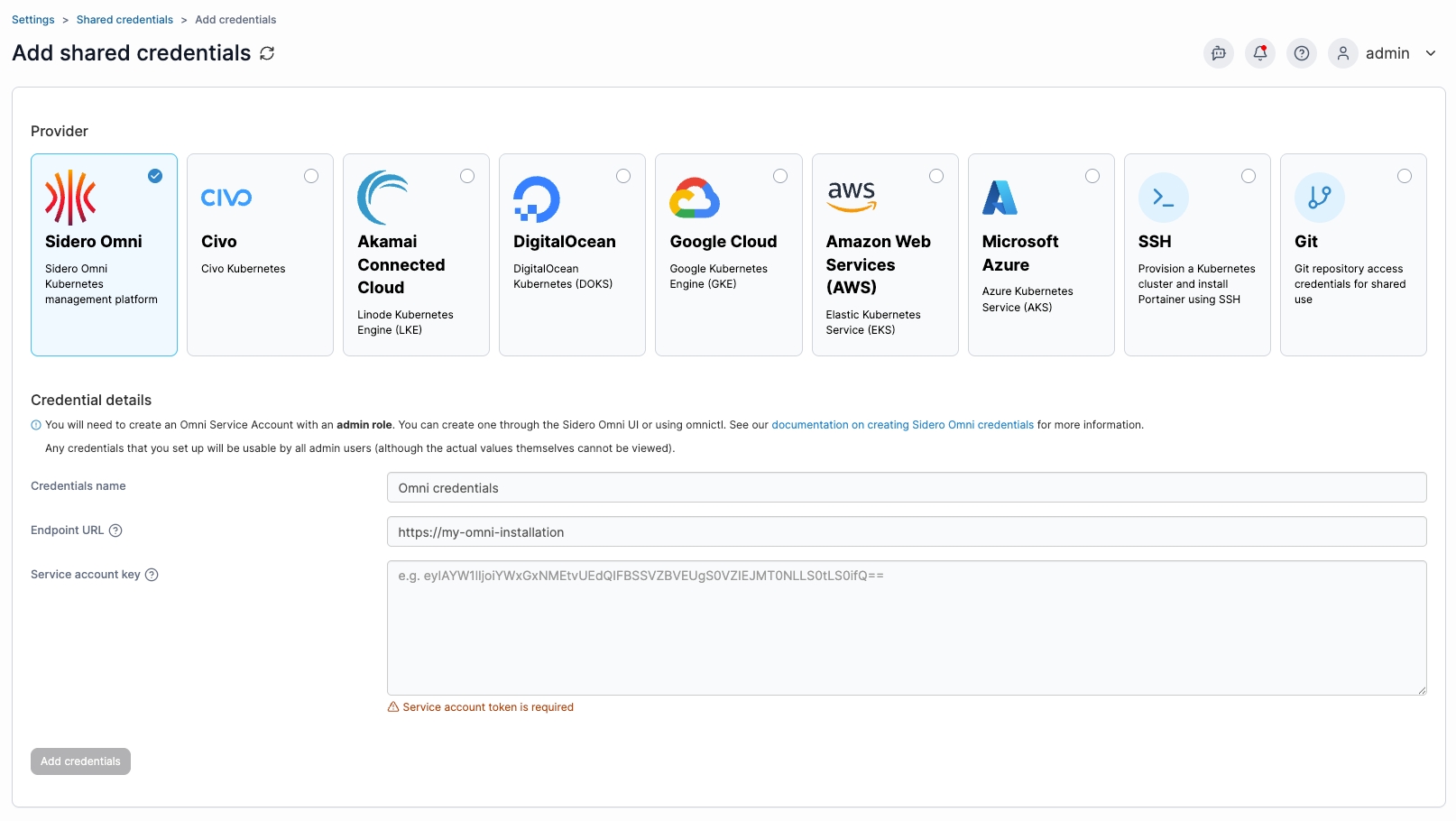Add Sidero Omni credentials
Before you can add your Sidero Omni credentials to Portainer, you will need to create a service account within Omni for Portainer to use. You can either do this via the Omni web UI, or via omnictl.
Create a service account with the Omni web UI
To create a service account for Portainer through the Omni web UI, first log into the web UI with an administrator user. Once logged in, click on Settings then select the Service Accounts tab.

Next click the Create Service Account button and complete the fields as per the table below:
ID
Enter an ID for the service account. We suggest something like portainer.
Expiration Days
Set the number of days you want the service account to be valid for.
Role
Select the Admin role from the dropdown. Portainer needs Admin privileges in order to create and manage clusters.

Once you have entered all the details click the Create Service Account button. The service account will be crated and you'll be shown the Service account key. Make a note of this key as it will not be shown again.

You can now proceed to add your credentials.
Create a service account with omnictl
To create a service account for Portainer using omnictl, you will first need an environment where omnictl is installed and configured to connect to your Omni installation with an Admin user. You can learn more on how to do this from Sidero Omni's documentation.
Once you have omnictl installed and configured, you can run the following command to create a service account:
This will create a service account named portainer with a lifetime of 1 year and with the same role as the user that created it. The command will output the OMNI_ENDPOINT and OMNI_SERVICE_ACCOUNT_KEY values - note both of these as you will need them in the next step.
You can now proceed to add your credentials.
Adding your credentials
To add credentials for an Omni account, from the Shared credentials page click Add credentials, then select the Sidero Omni option. Give your credential set a name and paste your Endpoint URL and Service account key into the respective boxes.

When you're ready, click Add credentials. Your credentials will now be available to you when creating an Omni Talos cluster.
Was this helpful?